Almost four years after our letter of intent to participate in the REXUS program with Experiment S Cephei 2019, the long-awaited and already twice postponed launch campaign in Esrange, Sweden, finally arrived at the end of March 2023. Six members of our team were invited to Esrange Space Center to perform the final preparations on our experiment and to attend the launch.
On March 21, we traveled from Dresden via Stockholm to Kiruna in northern Sweden. Besides us, the student teams Deadalus2 of the University of Würzburg, HERMESS of the University of the German Armed Forces Munich, ECRIDA of the University Politehnica Bucharest and RaPTeX of the Arctic University of Norway also traveled to Kiruna. For the REXUS30 campaign taking place at the same time, the teams IMFEX of RTWH Aachen, µMoon of FH Aachen, B2D2 of the Royal Institute of Technology Stockholm and ASTER of Luleå University of Technology were also there. They already knew each other from previous reviews and events within the REXUS program and so it was a joyful reunion. The bus took us from the airport to the Esrange Space Center about 45 km outside of Kiruna.
Since Esrange is a restricted civilian area, we first had to pick up our badges at the entrance gate, which then gave us access to all the premises that corresponded to our security level. In addition, the quite strict security instructions were explained. These include, for example, the absolute ban on taking photos of antennas and satellite dishes.
Shortly after midnight we finally made it to the charming Hotel Aurora (the guesthouse in Esrange), seeing the first auroras as we got off the bus.
The next day, after breakfast, the first morning meeting was scheduled, in which we received a detailed briefing on the implementation of the launch campaign. Several institutions were involved on site for the organization and implementation of the launch as well as for the support of the student teams: ESA, DLR, MORABA, SSC and the ZARM Bremen, as well as all the teams, of course. After the introduction, we went to the Dome, a very large hall, where we had the opportunities to sight our experiment and put it back into operation after its long journey.
The experiment had survived the transport well, but the used light guide plate was broken. Replacing the lighting with the very sparse spare parts also filled the next day. Nevertheless, the result was very convincing! One could almost think it was better than before.
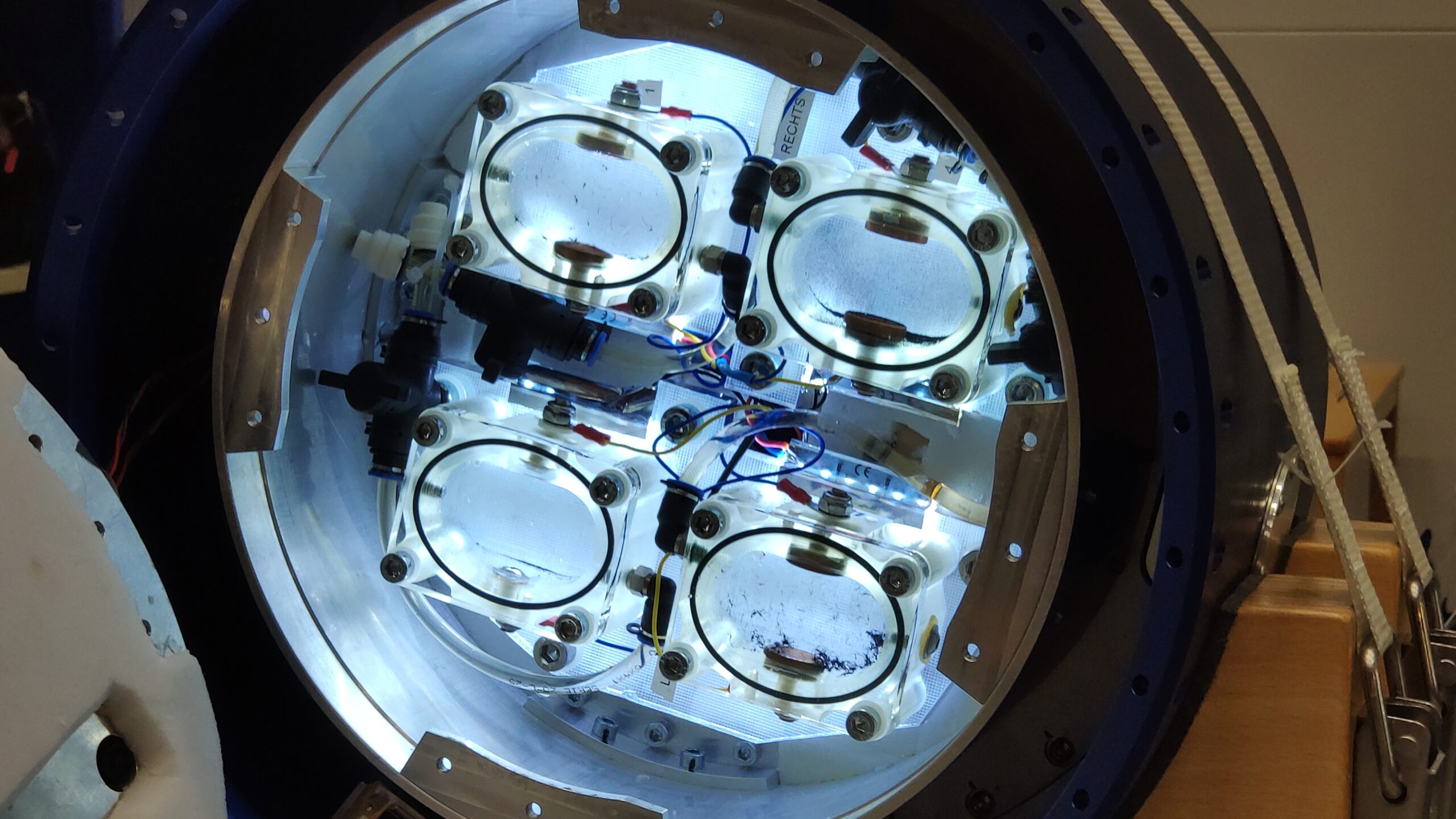
On the evening of the second day, the launch of the BROR mission took place on a sounding rocket (about 250 km altitude), which in several pulses produced a kind of artificial aurora by ejecting substances. The whole thing resembles an oversized firework. Scientists want to gain further knowledge about space weather and winds in high altitudes. For us as observers it was also very beautiful to see how many colorful dots gradually appeared in the sky.
In the following three days, we finalized the preparation of the S Cephei experiment. This included filling the four chambers with the CNT suspension already mixed in Dresden. The completed experiment was then ready for communication and timeline tests with the other experiment modules and the on-board computer. These procedures were performed very often to rule out errors and problems during proper launch. All tests were successful, allowing the payloads of the rocket to be finally bolted together.
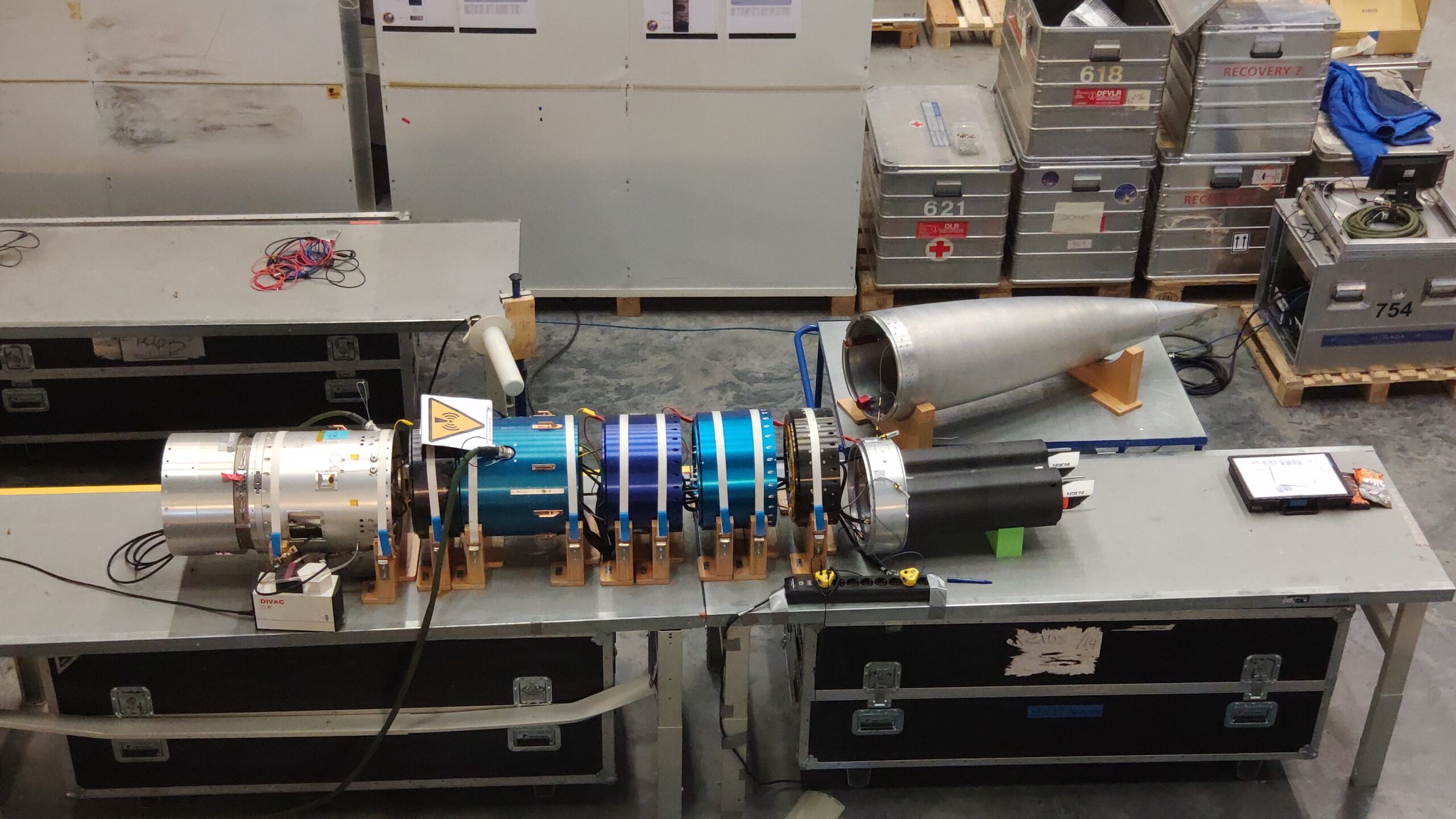
On March 27, all those participating in the campaign met at 5 a.m. in the Dome for a group photo. The two fully assembled rockets were seen for the last time before they were transported to the launch complex and connected to the rocket motors. Early rising characterized the rest of the time in Sweden from now on, as the many (test) countdowns were started well before sunrise to have as flexible a launch window as possible. This was especially true for the people who were allowed to operate our ground station.
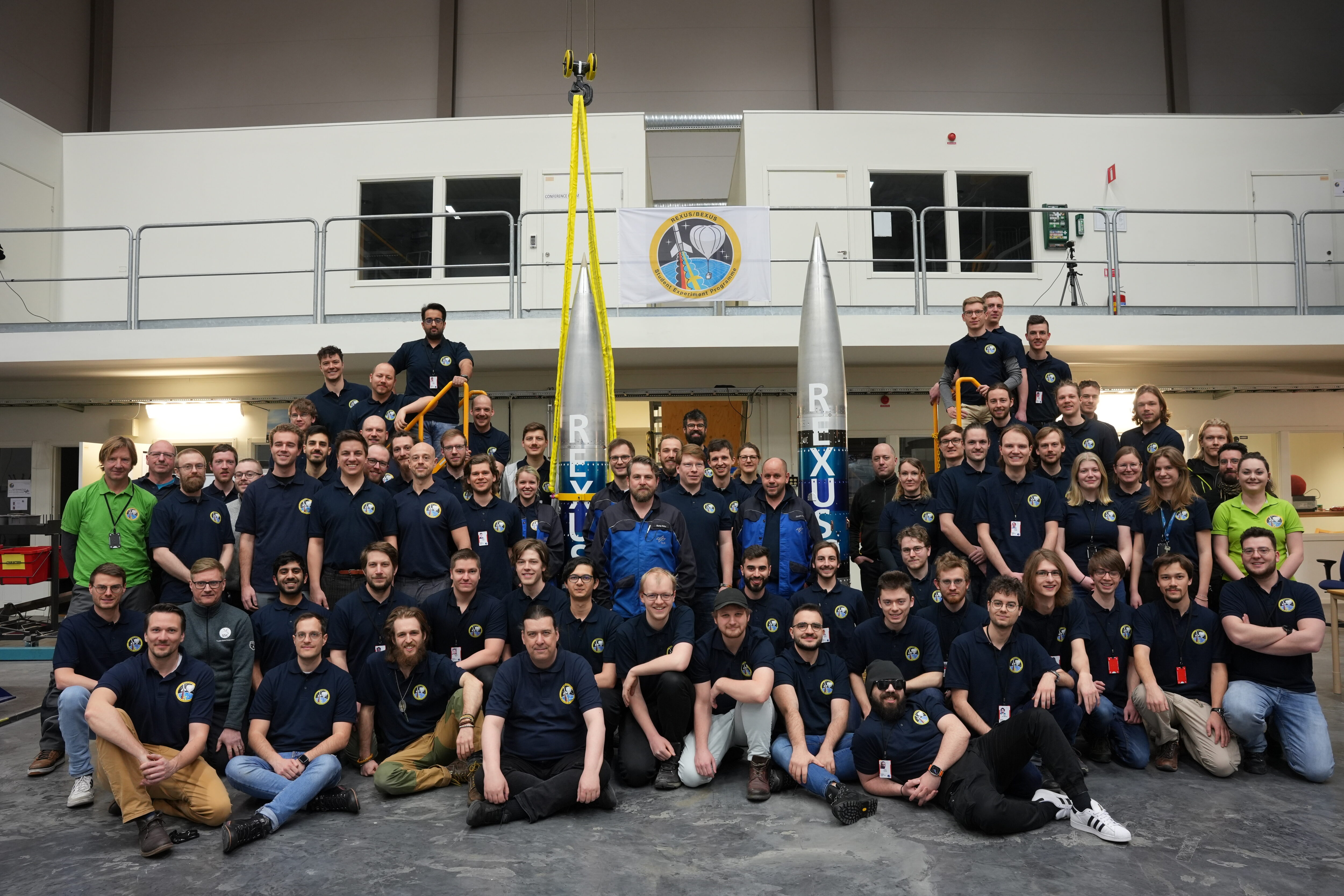
After the handover of the experiment, the tension decreased somewhat and we were able to enjoy waiting for the rocket launches in accordance with Swedish conditions. Especially the exchange with the other students and employees of the supervising institutions brought a lot of new inspiration. This is what makes the REXUS/BEXUS program so special.
In order to represent our favorite city in Saxony with respect and honor, we hired the best designer we know from Team S Cephei to create a logo for this year's campaign. The announced logo contest promised incredible fame. Our design was very well received - especially by the German teams and support staff:
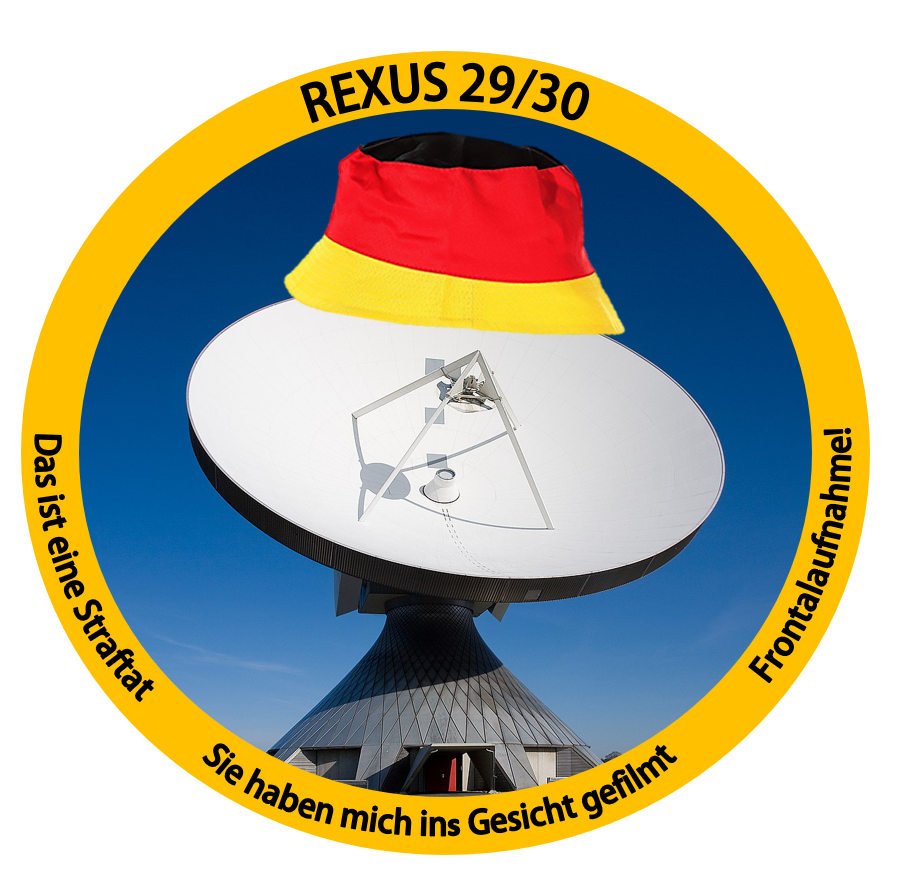
With the experts working on the rocket, there was some free time for us. So the next few days for us were marked by the idyllic snowy landscape of northern Sweden and the again excellent food. We were able to do a few laps on the advanced trails over the balloon launch site or even make our own tracks through the untouched snowy landscape of the forests.
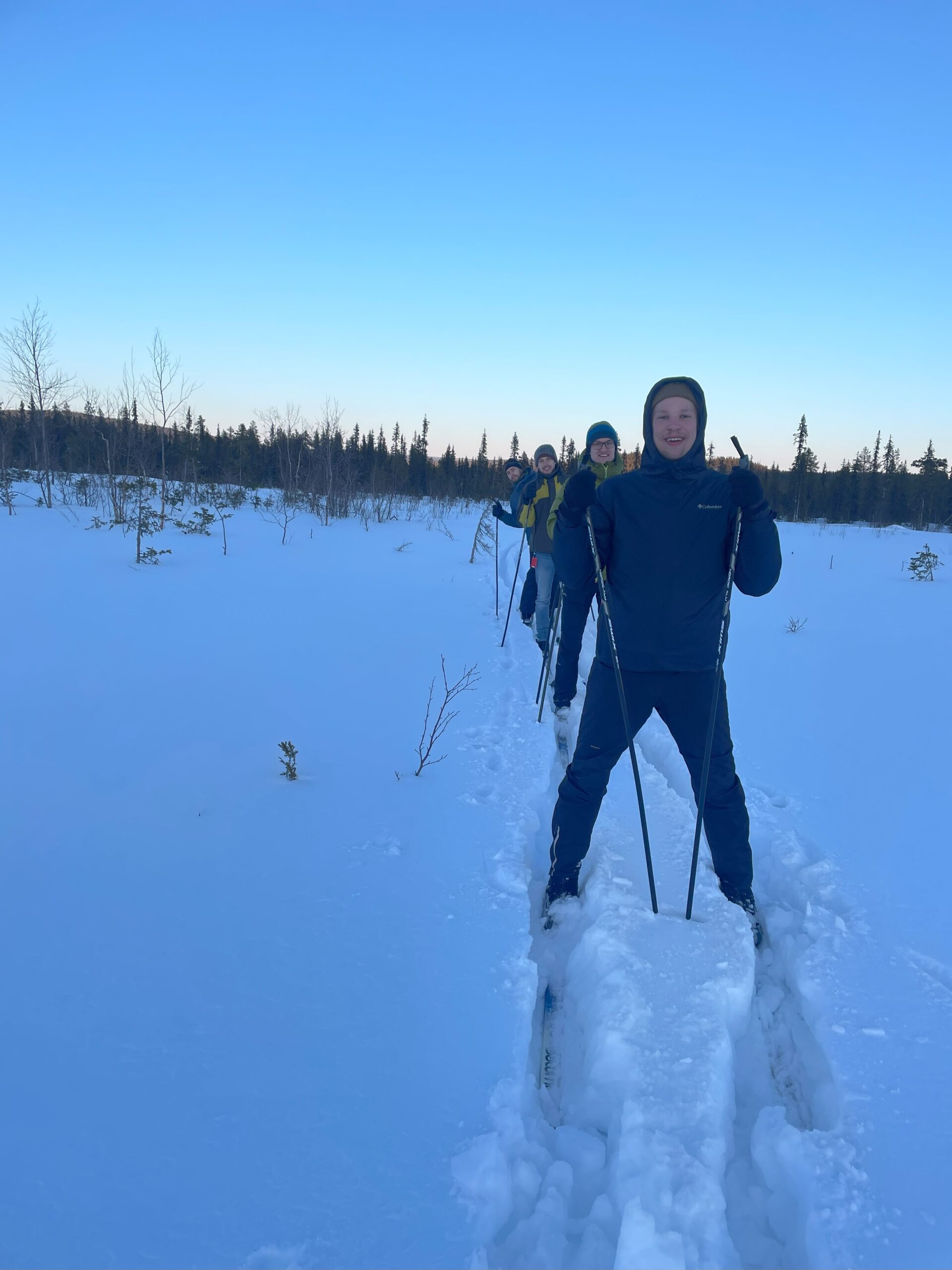
We also tried our hand at ice fishing. At least the necessary hole could be successfully drilled into the half meter thick ice after some effort. But then the fish didn't really want to bite. Therefore it remained with snow walks over the icy and snowy river courses. Physical training was provided accordingly.
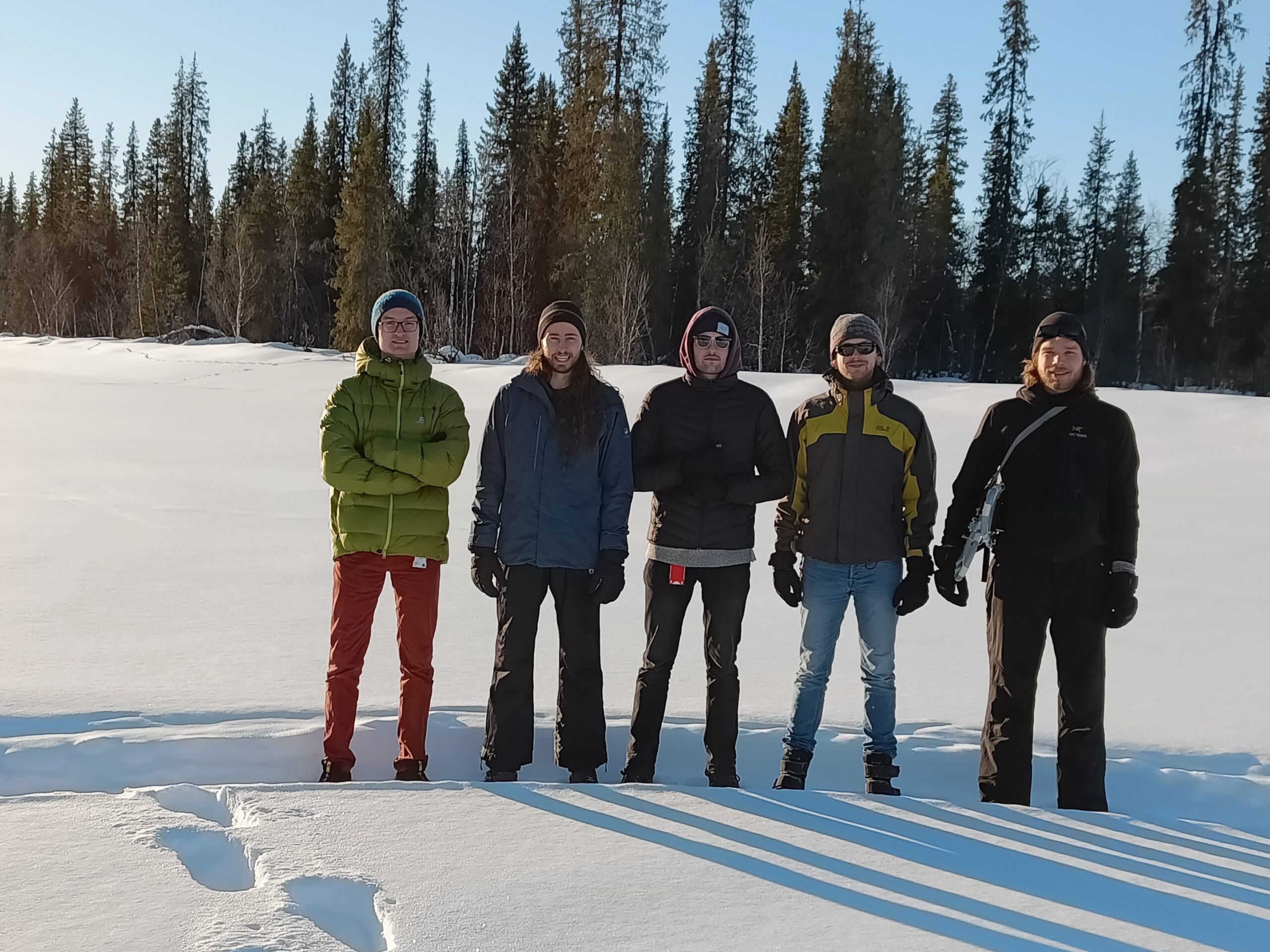
To pass the time with learning effect, there were also anecdote-filled lectures by Koen about the work at ESA. The entertaining and well-attended events allowed interesting to bizarre insights in an entertaining manner. There was also the opportunity to visit Isar Aerospace's test stand. In Kiruna, the German company wants to test its developed engines and we were allowed to take a first look at the test stand.
In the evenings, the gaze always went to the aurora forecast with the hope of capturing the impressive natural spectacle again. However, the first evenings could truly no longer be surpassed. Instead, the available sauna was often exploited with the one or other snow infusion.
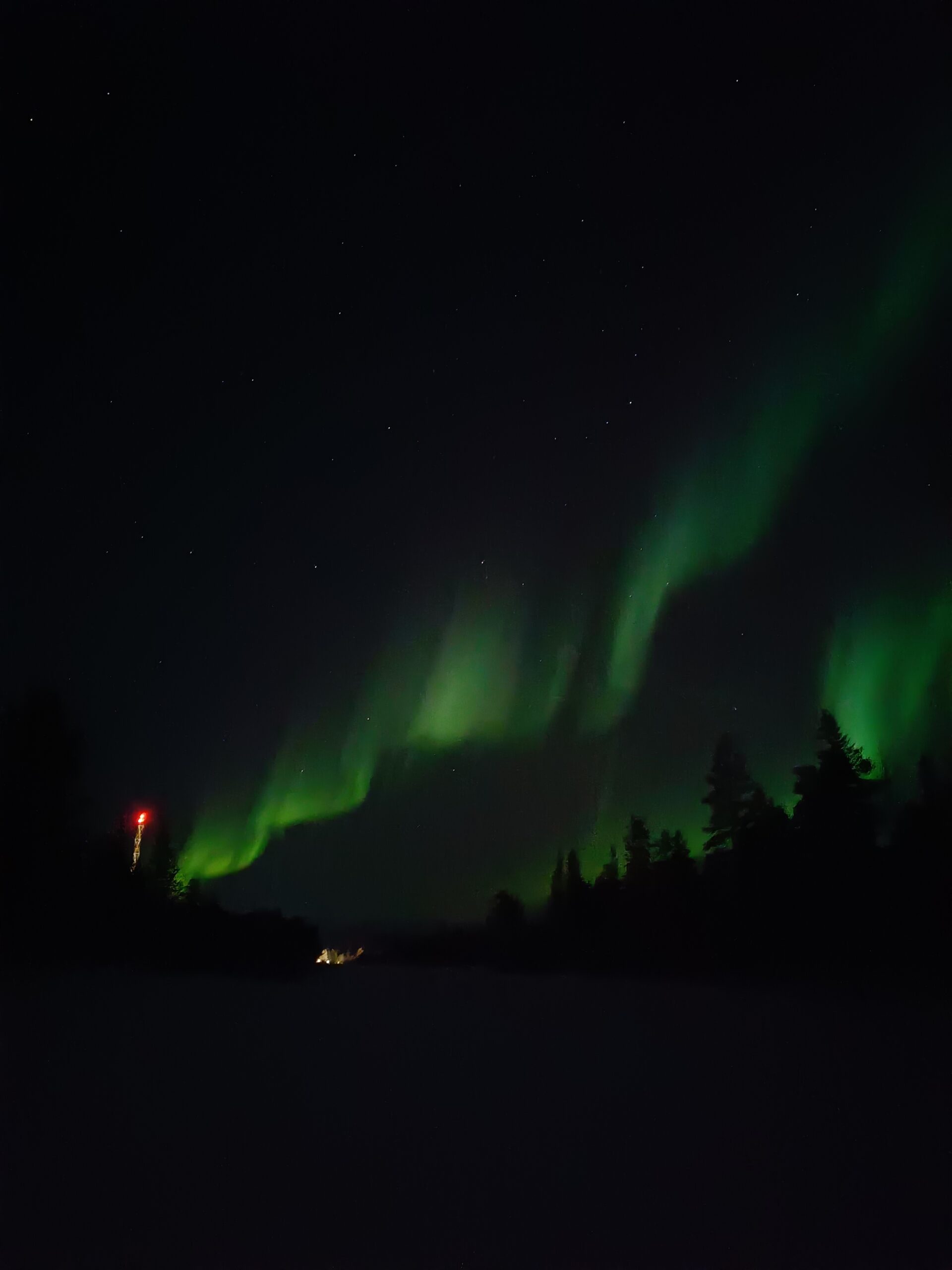
On March 29, we were able to witness the launch of REXUS30. At 5 o'clock in the morning we were driven by car and bus to Radar Hill, from where there was a wonderful view of the launch complex. It was then only a matter of waiting an hour in the freezing cold at about -10°C until the warning siren finally sounded. This is the signal that there are only 15 minutes left until the start. The launch was successful and really impressive! Experiencing the launch of a real rocket from such a short distance is really different from the impressions you know from videos! Back in the dome we got first information how the experiments of the other teams went.
The next day was the rollout of REXUS29. That means we had the chance to see the rocket with integrated rocket motor before it is finally moved to the launch building. There was also a tour of the Skylark Launch Tower and the refurbished rocket assembly building. In the afternoon, it was also time for us to confirm by signature that our experiment was officially ready for launch. This was done in an almost ceremonial session where all team leaders signed on the launch contract.
As expected, the first launch attempt was aborted due to excessive winds. The weather balloon, which was released before the rocket was launched, showed considerable lateral movements. A launch that day was out of the question. The next day, April 1, the promising second attempt took place. Our motivated ground station crew was allowed to perform their important tasks from the beginning on this day as well. Driven by their urge to explore, they pushed the buttons that needed to be pushed. Said the things that needed to be said.
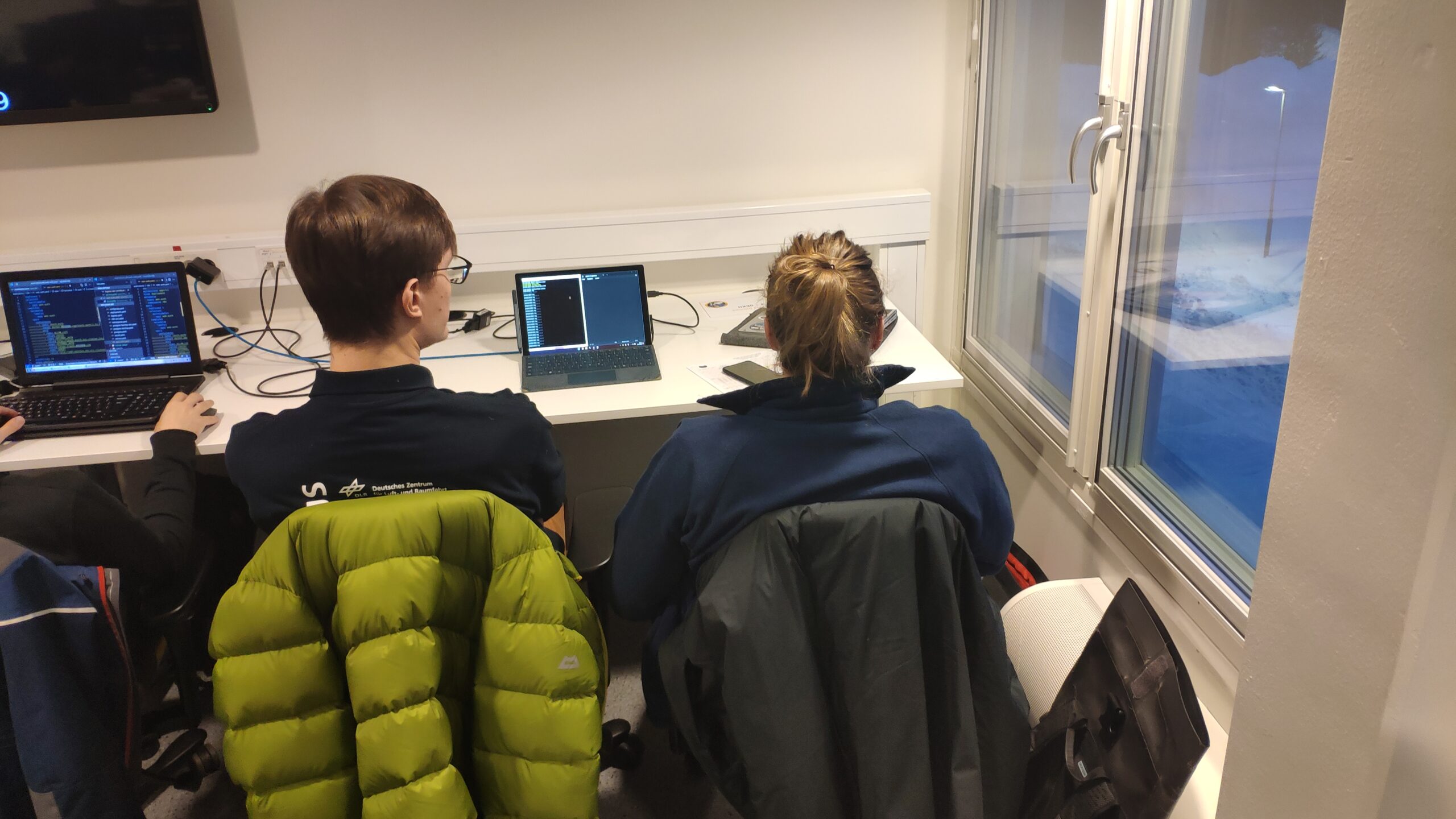
Shortly before takeoff, another weather balloon was launched. Unlike the day before, it glided almost vertically into the cloudless sky, illuminated by the rising sun. A few minutes later the rocket with our experiment followed. It quickly disappeared into the heights and we went to have breakfast.
At noon we saw our experiment again. Together with the other experiments, the payload was dropped by a helicopter in front of the Dome. Everyone's excitement was high to finally inspect the experiments after years of development. Our experiment looked surprisingly intact both externally and after the extensive disassembly.
The most important data, the video recordings of the cameras, were backed up and sifted right away. The recording of all six cameras worked. Since the expected results could not be observed directly, investigations were started immediately. However, a result is still pending here.
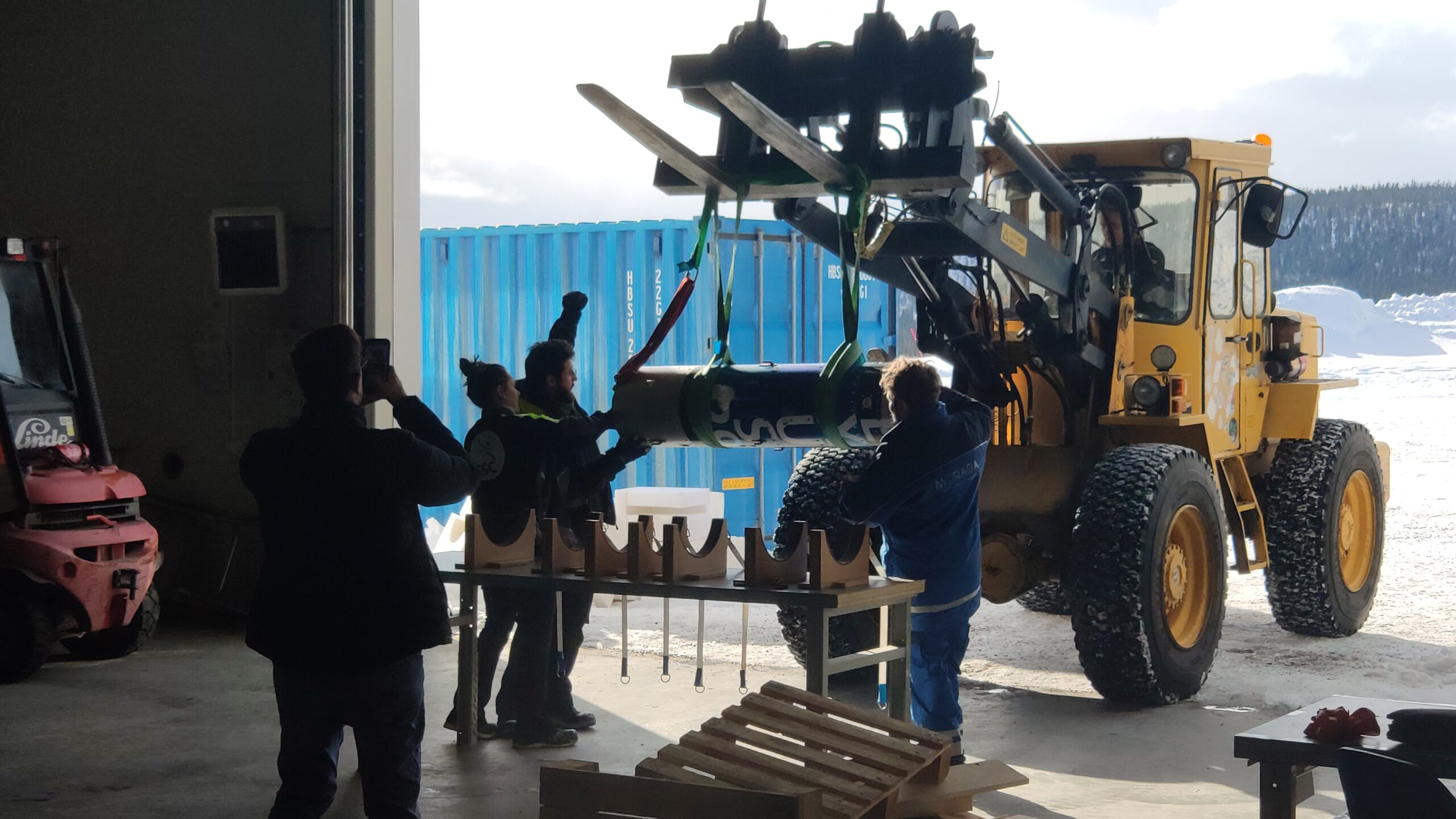
Afterwards, the experiment module was prepared and packed for transport. In a meeting, the preliminary experiment results were presented by all teams, which showed a broad spectrum of successes.
The last evening traditionally included the campaign dinner, where all participants of the campaign enjoyed specialties of Swedish cuisine in a relaxed atmosphere. Thereby some summarizing closing words and speeches were given and the teams received a campaign certificate. The conclusion of the last evening was to be the prepared skits of the individual teams. We complemented the funny anecdotes, pointed plays and engaging interludes with an acoustic-visual masterpiece of contemporary art.
On April 2, we returned to Dresden after eleven full but exciting and partly relaxing days. Now we have to evaluate the recorded measurement data.
At this point, we would like to thank all the staff of the numerous space organizations that make it possible for students from all over Europe to gain such experiences. This program cycle will certainly remain in our memories for a long time, also because of the multiple postponements due to Corona, but we are all the more grateful that the campaign could still take place! More information about the REXUS/BEXUS program can be found at the official Website.
Autor: Jonathan Bölk
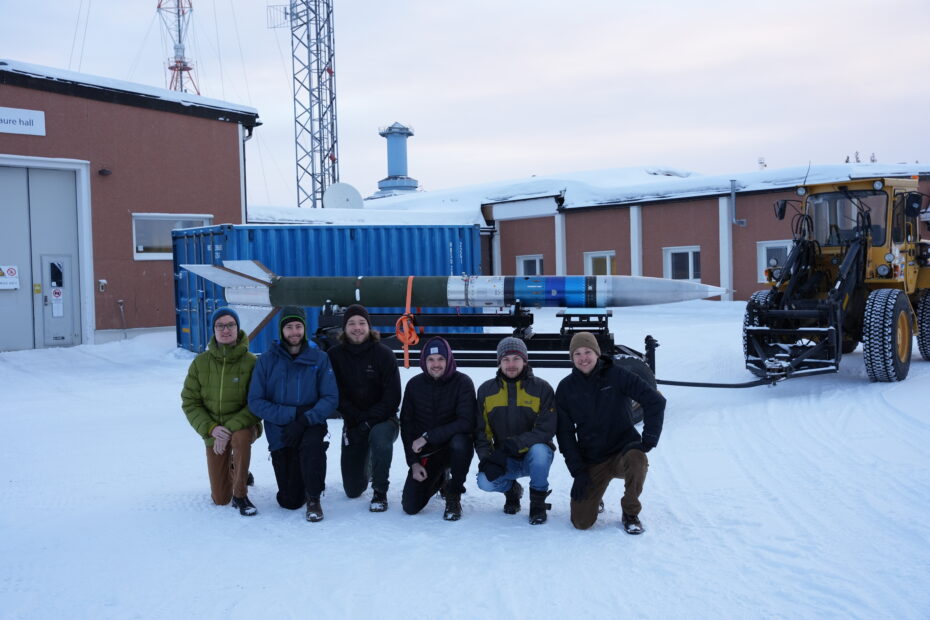
I don’t understand why the logo didn’t win. Can’t imagine anything better